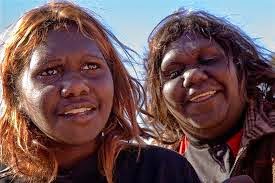As per the similarities between the cultures and religions of Eastern and Western Kush (India being Eastern Kush and Ethiopia being Western Kush); firstly, I would say the most significant similarity between the two cultures is the sacredness of cow/bull. One of the greatest deities, perhaps the greatest, in the Nile Valley (I.e. Western Kush) was Auset (Isis). Auset was a piscean deity of fertility, and was depicted as a cow, the mother goddess Hathor - whom the Semites call the golden calf. Remember, the ancient Nile valley people were big on symbolism; especially, the use of animals to symbolize physical realities and spiritual concepts. Thus, it makes sense that a great deity of fertility would be symbolized by a cow. I believe it's the same cult of Auset (I.e. mother goddess Hathor) that spread from the Western Kush to the Eastern Kush, and I consider this to be the reason why cows are sacred to Indians even today.
Another similarity that I've noticed between the two cultures is the belief in the idea of a "third eye" or a spiritual/hidden eye which can only be activated by the sun. The belief is that the pineal gland, located in the middle of the fore head, can be turned into a third/spiritual eye if activated properly by the sun rays. You may have noticed this in many Egyptian reliefs, where the Pharaoh's forehead is being penetrated by sun rays. The Kemetians called the "third eye" the eye of Heru, and the present day Indians visibly mark the location of the "third eye" with a red dot on their foreheads.
There are many other similarities between the two cultures; most importantly, the commonality of sacred symbols. The famous Hindu cross (I.e. Swastika) is also found on many ancient temples across the Nile, more specifically on the Axumite temple in Ethiopia. The Obelisk as a symbol of reproduction, resurrection and life (i.e. phallic symbol) in the Nile Valley is found under the same symbolism in India as Shiva Lingam.
As per the Tamil people's claim that their language is older than Sanskrit, I agree to this claim. I believe that the Tamil language and many other languages spoken in most of Southern India today are a variant of proto- Dravidian language group. Many contemporary scholars believe that while it's true that the original inhabitants of India and Indian subcontinent (Cusha Dwipa within or Eastern Kush) were Dravidian speaking people (please research Mohenjo-Daro/Harappan civilization), these original Dravidian people were invaded by a nomadic tribe from the North (Nomadic Aryans) who later destroyed the Dravidian's civilization and introduced Sanskrit language into India. Scholars cited the post-invasion nomadic culture of cremation of the dead, prevalent, in India to buttress their foreign invasion hypothesis.
However, the ancient scholars, more specifically, Homer, Herodotus, Strabo, to name but a few, were of the view that the people from the Western and Eastern Kush were one and the same. It is plausible they came into this conclusion based on the morphological similarities between these two groups of people. While I'm not dismissing the thesis of the contemporary and ancient scholars, I am however offering a slightly different view of the racial composition of Eastern Kush (Indian subcontinent) and the historical origin of its people. But before I do so, let me take you back very quicky to the origin of modern man.
I will start by saying that I agree to the evolutionist's mono-genetic origin of man. However, I believe the origin of modern man was that of mutation and hybridization. My research revealed to me that evolution occurred to the point of Grimaldi man, and the rest was a product of hybridization (please see Cro-Magnon man). That is to say, the divergent human species we see today came about through a process of hybridization or cross breeding between the Grimaldi man and the humanoids (I.e. Neanthertals, Denisovans etc).
In my essay "hybridization hypothesis," I surmised with caution that Australian aboriginals were a product of the interbreeding between the Grimaldi men and the Denisovans (sub species of homo sapiens). I believe the Denisovans were the original inhabitants of Australian and Indian subcontinent, but the Grimaldi men came over into these regions from Africa around 40,000 years ago where they interbreed with the Denisovans to survive in a new environment. Out of this interbreeding came the proto Dravidian people, who were the original inhabitants of Eastern Kush. Around 1000 B.C, perhaps much earlier, a group of nomadic men (Nomadic Aryans) from the Caucus region, who were hybrid of Grimaldi and Neanthertals themselves, invaded the Western Kush (North and North East Africa now called the Middle East) via present day Iran, and Eastern Kush (ancient India) via Afghanistan.They destroyed the original Elamite civilization, built by the Western Kushites or the Ethiopians in Iran. They also destroyed the original Mohenjo-Daro/Harappan civilization, built by the ancient Dravidians in the Indus Valley.
I do not believe, however, that this invasion happened just once. There was a series of invasions that spanned almost a millennium. For example, the initial invasion of Eastern Kush by the Turks was not strong enough to subvert the original indigenous spiritual system, but was strong enough to corrupt it into what is known today as Hinduism. Buddhism was later developed by the displaced Dravidians from the South as a protest to the corruption of their ancient system (please research Khmer people of Indian subcontinent) - note the similarity between Khem and Khmer. In the early A.D era, another group of Monist Turks invaded Eastern and Western Kush, and introduced a male dominated religious philosophy called Mohammedanism to these two regions. This is why North Africa, North East Africa (Middle East), and many countries in Indian sub-continent today are Islamic - Islam developed out of Mohammedanism.
In conclusion, the origin of modern man is that of evolution and hybridization. And I contend that human population outside of Africa is largely a product of hybridization. What I have written here is not written in stone. They are to be studied, interrogated, and challenged.
References:
Martin Bernal: “Black Athena – Vol.I-Vol.III.”
Godfrey Higgins: "Anacalypsis - Vol.I & II."
Drusilla Dunjee: “The Wonderful Ethiopians of the Ancient Cushite Empire”
Dan Kedmey: "What DNA Reveals About India's Caste System," Time Magazine, Aug.27, 2013.
Carl Zimmer: "Interbreeding With Neanthertals," Discover Magazine, March, 2013.
/Ojo Oyebisi/























